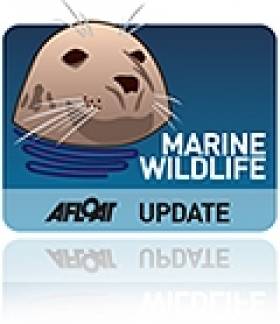Displaying items by tag: harbour seal
Belfast Lough Seal Spotted With Can Stuck on Jaw Rescued in Scotland
A young harbour seal spotted in Belfast Lough earlier this month with an aluminium can stuck on its lower jaw has been rescued by police in Scotland.
The Irish News reports that the juvenile marine mammal had swum across the North Channel from Belfast Lough to the west coast of Scotland last weekend.
Officers from the Ministry of Defence Police at Clyde naval base were able to approach the seal and remove the drinks can, which was stuck to the animal’s mouth after its teeth had pierced the metal.
An MoD spokesperson said: “We would urge people to take extra care in how they dispose of their rubbish near any waterway.”
Lagan Search & Rescue, which led the search effort for the seal in Northern Ireland, commented on social media: “We are delighted to hear that its ordeal has had such a positive outcome.”
The search continues in Belfast Lough for a young harbour seal spotted with an aluminium can stuck on its lower jaw in recent days.
According to BBC News, the seal was spotted on Wednesday (6 October) in a state of distress.
But despite attempts by Belfast Harbour Police to help, the marine mammal swam away and has not been sighted since.
Lagan Search and Rescue is assisting in the search along with experts from Portaferry’s Exploris Aquarium and others.
And it asks that any sightings be reported to Debbie Doolittle’s Wild Life and that “nobody attempts to help the seal [themselves]”.
Seriously Ill Seal Pup Now In Recovery
#MARINE WILDLIFE - A harbour seal pup found in a serious condition in Balbriggan last week is new recovering in the care of the Irish Seal Sanctuary.
Colin, as he has been named by ISS volunteers, was discovered on Kings Beach suffering from blood loss and breathing problems, the Fingal Independent reports.
An ISS spokesperson remarked that it was "very unusual" to find harbour seal pups this late in the year, and in an area dominated by colonies of grey seals.
Thanks to medicine donated by the Dogs Aid veterinary clinic in north Dublin, Colin is now "making great progress" though full recovery will take some time.
The seal pup will remain in the care of the ISS until he is fit enough to be returned to Balbriggan for release.























